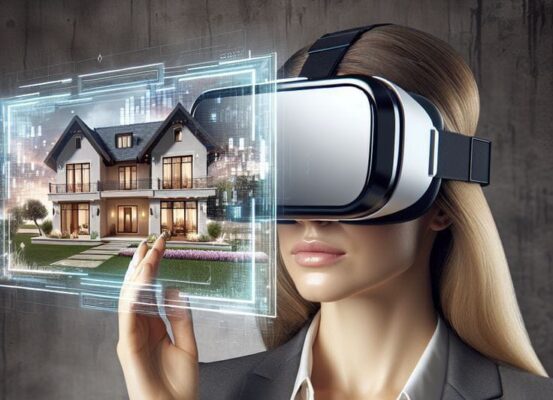
The next big thing is edge-based AI, which transforms the physical world. Technologies, such as
augmented reality, will change how humans interact with each other as well as with their physical
environment.
Technology today is evolving at a rapid pace, enabling faster change and progress, causing an
acceleration of the rate of change. However, it is not only technology trends and emerging
technologies that are evolving, a lot more has changed, making IT professionals realize that their
role will not stay the same in the contactless world tomorrow. And an IT professional in 2025 will
constantly be learning, unlearning, and relearning, out of necessity, if not desire!

What does this mean for you? It means staying current with emerging technologies and the latest
technology trends. It means keeping your eyes on the future to know which skills you’ll need to
know to secure a safe job tomorrow and even learn how to get there. Here are the top 25 emerging
technology trends you should watch in 2025.
1. Generative AI:
Starting the list of new technology trends with the talk of the town, gen-AI! Generative AI is set to
dominate as a key technology trend in 2025, reshaping industries through its ability to create
highly sophisticated and human-like content, from text and images to audio and complex
simulations. Advancements in generative models, like GPTs and multimodal systems, are driving
new applications in content creation, design automation, and interactive experiences.
This technology is not only enhancing productivity but also revolutionizing how businesses
approach problem-solving, customer engagement, and creative processes, making tools more
accessible and versatile across various sectors. In 2025, organizations will continue integrating
generative AI into workflows to innovate faster and provide personalized services at scale.
2. Quantum Computing:
Quantum computers leverage the properties of quantum mechanics to process information
exponentially faster than classical computers for specific tasks. This year, we’re seeing quantum
computing being applied in areas such as cryptography, where it can potentially crack currently
considered secure codes, and in drug discovery, speeding up the process by accurately simulating
molecular structures. The technology is still nascent but poised to revolutionize industries by
solving complex problems intractable for traditional computers.

3. 5G Expansion:
The next emerging technology trend is 5G! The fifth generation of mobile networks, 5G, promises
significantly faster data download and upload speeds, wider coverage, and more stable
connections. The expansion of 5G is facilitating transformative technologies like IoT, augmented
reality, and autonomous vehicles by providing the high-speed, low-latency connections they
require. This technology is crucial for enabling real-time communications and processing large
amounts of data with minimal delay, thereby supporting a new wave of technological innovation.
4. Virtual Reality (VR) 2.0:
Enhanced VR technologies are offering more immersive and realistic experiences. With
improvements in display resolutions, motion tracking, and interactive elements, VR is becoming
increasingly prevalent in gaming, training, and therapeutic contexts. New VR systems are also
becoming more user-friendly, with lighter headsets and longer battery life, which could lead to
broader consumer adoption and integration into daily life.
5. Augmented Reality (AR):
In 2025, Augmented Reality (AR) is poised to be a major tech trend, further integrating into
consumer and enterprise applications. With the evolution of hardware, such as advanced AR
glasses and improvements in mobile devices, AR will offer more immersive, interactive
experiences. This technology is set to transform industries like retail, real estate, and education by
enhancing how users visualize products, learn, and interact with their environments. AR-powered
solutions will allow users to seamlessly overlay digital information onto the real world, bridging the
gap between physical and digital experiences.

6. Internet of Things (IoT) in Smart Cities:
IoT technology in smart cities involves the integration of various sensors and devices that collect
data to manage assets, resources, and services efficiently. This includes monitoring traffic and
public transport to reduce congestion, using smart grids to optimize energy use, and implementing
connected systems for public safety and emergency services. As cities continue to grow, IoT helps
manage complexities and improve the living conditions of residents.
7. Biotechnology in Agriculture:
Advances in biotechnology are revolutionizing agriculture by enabling the development of crops
with enhanced traits, such as increased resistance to pests and diseases, better nutritional
profiles, and higher yields. Techniques like CRISPR gene editing are used to create crops that can
withstand environmental stresses such as drought and salinity, which is crucial in adapting to
climate change and securing food supply.

8. Autonomous Vehicles:
The next emerging technology trend is Autonomous vehicles, which use AI, sensors, and machine
learning to navigate and operate without human intervention. While fully autonomous cars are still
under development, there’s significant progress in integrating levels of autonomy into public
transportation and freight logistics, which could reduce accidents, improve traffic management,
and decrease emissions.
9. Blockchain Beyond Crypto:
Initially developed for Bitcoin, blockchain technology is finding new applications beyond
cryptocurrency. Industries are adopting blockchain for its ability to provide transparency, enhance
security, and reduce fraud. Uses include tracking the provenance of goods in supply chains,
providing tamper-proof voting systems, and managing secure medical records.

10. Edge Computing:
Edge computing involves processing data near the source of data generation rather than relying on
a central data center. This is particularly important for applications requiring real-time processing
and decision-making without the latency that cloud computing can entail. Applications include
autonomous vehicles, industrial IoT, and local data processing in remote locations.
11. Personalized Medicine:
The personalized medicine and treatment approach uses genetic, environmental, and lifestyle
factors to diagnose and treat diseases precisely. Advances in genomics and biotechnology have
enabled doctors to select treatments that maximize effectiveness and minimize side effects.
Personalized medicine is particularly transformative in oncology, where specific therapies can
target genetic mutations in cancer cells, leading to better patient outcomes.
12. Neuromorphic Computing:
The next emerging technology trend is neuromorphic computing which involves designing
computer chips that mimic the human brain’s neural structures and processing methods. These
chips process information in ways that are fundamentally different from traditional computers,
leading to more efficient handling of tasks like pattern recognition and sensory data processing.
This technology can produce substantial energy efficiency and computational power
improvements, particularly in applications requiring real-time learning and adaptation.

13. Green Energy Technologies:
Innovations in green energy technologies focus on enhancing the efficiency and reducing the
costs of renewable energy sources such as solar, wind, and bioenergy. Advances include new
photovoltaic cell designs, wind turbines operating at lower wind speeds, and biofuels from nonfood biomass. These technologies are crucial for reducing the global carbon footprint and
achieving sustainability goals.
14. Wearable Health Monitors:
Advanced wearable devices now continuously monitor various health metrics like heart rate, blood
pressure, and even blood sugar levels. These devices connect to smartphones and use AI to
analyze data, providing users with insights into their health and early warnings about potential
health issues. This trend is driving a shift towards preventive healthcare and personalized health
insights.
15. Extended Reality (XR) for Training:
Extended reality (XR) encompasses virtual reality (VR), augmented reality (AR), and mixed reality
(MR), providing immersive training experiences. Industries like healthcare, aviation, and
manufacturing use XR for risk-free, hands-on training simulations replicating real-life scenarios.
This technology improves learning outcomes, enhances engagement, and reduces training costs.
16. Voice-Activated Technology:
Voice-activated technology has become more sophisticated, with devices now able to understand
and process natural human speech more accurately. This technology is widely used in smart
speakers, home automation, and customer service bots. It enhances accessibility, convenience,
and interaction with technology through hands-free commands and is increasingly integrated into
vehicles and public spaces.
17. Space Tourism:
Commercial space travel is making significant strides with companies like SpaceX and Blue Origin.
These developments aim to make space travel accessible for more than just astronauts. Current
offerings range from short suborbital flights providing a few minutes of weightlessness to plans
for orbital flights. Space tourism opens new avenues for adventure and pushes the envelope in
aerospace technology and research.
18. Synthetic Media:
The next emerging technology trend is synthetic media, which refers to content that is entirely
generated by AI, including deep fakes, virtual influencers, and automated video content. This
technology raises critical ethical questions and offers extensive entertainment, education, and
media production possibilities. It allows for creating increasingly indistinguishable content from
that produced by humans.
19. Advanced Robotics:
Robotics technology has evolved to create machines that can perform complex tasks
autonomously or with minimal human oversight. These robots are employed in various sectors,
including manufacturing, where they perform precision tasks, healthcare as surgical assistants,
and homes as personal aids. AI and machine learning advances are making robots even more
capable and adaptable.

Author
